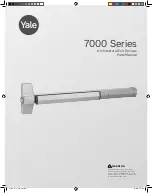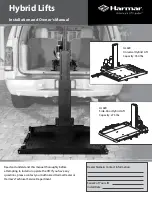
23
ENGLISH
Wear sturdy, insulated footwear; the shoes should
also perform their insulation function when wet.
Low-rise shoes are not suitable since burning metal
droplets which fall downwards cause burns.
Wear suitable clothing and do not wear any synthetic
clothing.
Do not look into the arc without eye protection;
only use welding protective shield with the proper
protective glass pursuant to DIN. The arc also emits
UV radiation, in addition to light and heat radiation,
which may cause glare and/or burns. The invisible
ultraviolet radiation causes very painful conjunctivitis,
which is only noticeable a few hours later, if sufficient
protection is not worn. In addition, the UV radiation
causes damaging sunburn to areas of the body which
are not protected.
Persons or assistants near to the arc must also be
made aware of the risks and provided with the neces-
sary protective equipment. If necessary, protective
walls are to be constructed.
No welding work may be carried out on containers in
which gases, fuels, mineral oils or similar have been
stored, even if they have been empty for a long time
already, as residues lead to an explosion hazard.
In spaces at risk of fire and explosion, special regula-
tions apply.
Welded joints which are subject to great strain and
must always meet the safety requirements and may
only be welded by welders who have received special
training and obtained the relevant qualifications.
Examples include: Pressure vessels, sliding rails,
hitches etc.
Small and hot rooms
Caution! Danger of poisoning / Danger of
asphyxiation
• Significant quantities of smoke and gases are
created during welding work. Ensure that the
smoke and gases can always be removed via a sui-
table opening. However, an oxygen supply must
never be added. This increases the fire hazard.
When working in small or hot rooms, insulating bases
and interim layers, as well as gauntlets made from
leather or other non-conductive materials, are to be
used to insulate the body against the floor, walls,
conductive parts of the device and similar.
When using welding transformers for welding work
in situations with an increased electrical risk, e.g.
in small rooms with electrically conductive walls
(boilers, pipes etc.), in hot rooms (sweat-soaked work
clothes), the output voltage of the flux cored elec-
trode welding device may not exceed 48 V~ in idling
conditions (effective value). The device may thus
be operated in this case on the basis of its output
voltage in idling conditions.
Protective clothing
Caution! Risk of accident due to spraying
sparks
The spraying welding sparks may lead to painful
burn injuries.
Therefore, always observe the following instruc-
tions:
• Always wear a leather apron.
• Use leather gloves.
• Wear suitable head protection when welding
overhead.
• Ensure that your trouser legs cover the tops of
your shoes.
• Wear sturdy, insulating footwear.
Whilst working, the welder’s entire body must be
protected against radiation and burns by means of
the clothing and face protection.
Gauntlets made from a suitable material (leather)
must be worn on both hands. These must not be
damaged.
Suitable aprons must be worn to protect the clothing
against flying sparks and burns. If the nature of the
work, e.g. overhead welding, requires this, a protec-
tive suit must worn and, where necessary, this must
also include suitable head protection.
The protective clothing which is used, as well as all
the accessories, must be compliant with the “Personal
Protective Equipment” Regulation (2016/425).
Class A (IEC 60974-10):
If you intend to use the apparatus in residential sur-
roundings supplied by the low voltage mains supply,
an electromagnetic filter may be required to suppress
electrical disturbance to a level where they will no
longer be a nuisance to the user.
The apparatus may be used in industrial or other
areas where power is not supplied by municipal LV
mains.
Class A apparatus are not intended for use in resi-
dential areas where power is supplied via municipal
LV mains, since unfavourable power conditions may
cause interference.
As a user, you must make sure, after consultation with
your energy provider, if necessary, that your point of
connection on which the machine is to be operated
meets the requirements above.
The user is responsible for faults arising from the
welding.
EN
















































